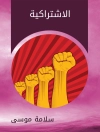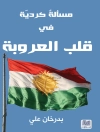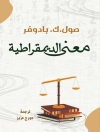This book distinguishes conceptually between indigenous and constructed social capital and the associated spontaneous and induced collective action for rural development and natural resource preservation. While some of the case studies in this book show that induced collective action can lead to cost-effective, community-centric and empirically grounded rural development initiatives, other case studies show that spontaneous collective action, based on indigenous social capital, can result in resource preservation, positive development outcomes, and resistance to the excesses engendered by conventional development. The authors also explore a hybrid form whereby spontaneous collective action is given a more effective and sustainable shape by an outside organization with experience of induced collective action.
Exploring alternative community-centric paths to development, especially those attuned with sustainability imperatives, is part of a global search for solutions. While the volume draws on the Pakistani case, the problem with conventional development approaches and the need for complementary alternatives is not unique to only this country; and the volume has broader relevance to students and researchers across the fields of social policy and development.
विषयसूची
1. Introduction: Social capital and collective action – theory and practice.- Part 1. Inducing collective action.- 2. Local support organizations: an exit strategy for rural development NGOs.- 3. A community development exit strategy: Women excelling and filling vacated spaces.- 4. Induced collective action to deliver rural water supply.- Part 2. Spontaneous collective action for indigenous rights.- 5. Anatomy of a peoples’ rights movement: a case study of the Sarhad Awami Forestry Ittehad (SAFI).- 6. Advocacy for justice: the Pakistan Fisher folk Forum (PFF).- 7. The military and land rights: stealing land from the commons.- 8.Coping with natural hazards: Assessing the disconnect between autonomous social capital and spontaneous collective action.- 9. Conclusion: Strengthening the community-government interface.
लेखक के बारे में
Shaheen Rafi Khan has a Ph.D. in economics from Columbia University. He is a researcher and consultant. He has carried out consultancy assignments for the World Bank, DFID, IDRC, Canada, ICIMOD, Nepal and the Free University, Amsterdam. His research focus is on development, international trade and the environment.
Shahrukh Rafi Khan is Research Associate, Mount Holyoke College, USA. He formerly taught at the University of Utah and Vassar College and served as a Copeland Fellow at Amherst College.












